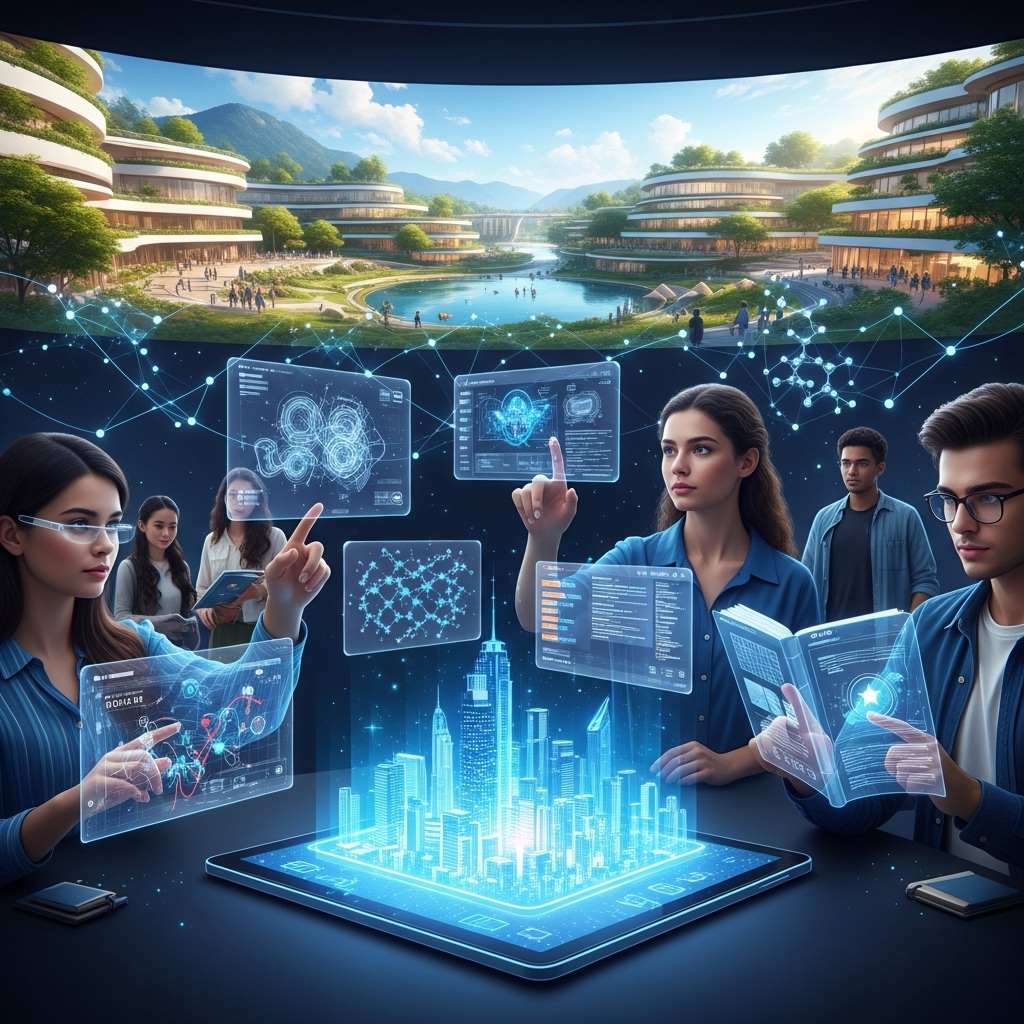
Introduction to Digital Education with AI
The world of education is on the cusp of a revolution, driven by the integration of Artificial Intelligence (AI) into learning platforms. This synergy between digital education and AI is transforming the way we learn, making it more personalized, accessible, and effective. The future of education is not just about adopting technology; it's about leveraging AI to create immersive, interactive, and highly adaptive learning experiences. As we delve into this new era, it's crucial to understand the current landscape, the potential of AI in education, and how it's set to revolutionize the way we approach learning.
Understanding AI in Education
AI in education refers to the use of artificial intelligence technologies in educational settings. This can range from simple tools that help with grading to complex systems that create personalized learning plans for each student. AI can analyze vast amounts of data, including student performance, learning behaviors, and educational content, to provide insights that can improve learning outcomes. For instance, AI-powered adaptive learning systems can adjust the difficulty level of course materials based on a student's performance, ensuring that the student is always challenged but not overwhelmed.
Personalization of Learning
One of the most significant impacts of AI on education is the personalization of learning. Traditional classroom settings often follow a one-size-fits-all approach, where the pace and content of the curriculum are the same for all students. However, every student learns differently and at their own pace. AI can help tailor the learning experience to each student's needs, abilities, and learning style. For example, AI-driven systems can identify knowledge gaps and recommend additional resources or practice exercises to help students fill those gaps. This personalized approach not only enhances learning outcomes but also increases student engagement and motivation.
Accessibility and Inclusion
AI is also making education more accessible and inclusive. For students with disabilities, AI-powered tools can provide critical support. For instance, speech-to-text systems can assist students with mobility or dexterity impairments, while text-to-speech systems can help students with visual impairments. Moreover, AI can facilitate language translation in real-time, breaking down language barriers and making educational content accessible to a broader audience. This inclusivity is a significant step towards ensuring that everyone has equal access to quality education, regardless of their abilities or linguistic background.
Intelligent Tutoring Systems
Intelligent Tutoring Systems (ITS) are another area where AI is making a significant impact. These systems mimic the behavior of human tutors by providing one-on-one support to students. ITS can offer real-time feedback, guidance, and assessment, which are critical for effective learning. They can also simulate real-world scenarios, allowing students to apply theoretical knowledge in practical contexts. For example, in medical education, AI-powered simulation tools can mimic patient scenarios, enabling students to practice their clinical skills in a safe and controlled environment.
Challenges and Concerns
While AI holds tremendous potential for transforming education, there are also challenges and concerns that need to be addressed. One of the primary concerns is the bias in AI systems, which can perpetuate existing inequalities if the data used to train them is biased. Additionally, there's a risk that over-reliance on technology could diminish critical thinking and deep learning skills. Furthermore, the digital divide remains a significant barrier, with many communities lacking access to the technology and internet connectivity needed to leverage AI-powered educational tools. Addressing these challenges will require careful consideration and strategic planning.
Conclusion: Embracing the Future of Digital Education
In conclusion, the integration of AI into digital education is not just a trend; it's a necessity for creating a more inclusive, effective, and personalized learning experience. As we move forward, it's essential to embrace this technology while being mindful of its limitations and potential biases. By doing so, we can harness the power of AI to revolutionize learning, making high-quality education accessible to everyone, regardless of their background or location. The future of education is digital, and with AI at its core, it promises to be more exciting, engaging, and impactful than ever before. As educators, policymakers, and learners, we must work together to navigate this future, ensuring that the benefits of AI in education are equitably distributed and that no one is left behind in this digital revolution.
